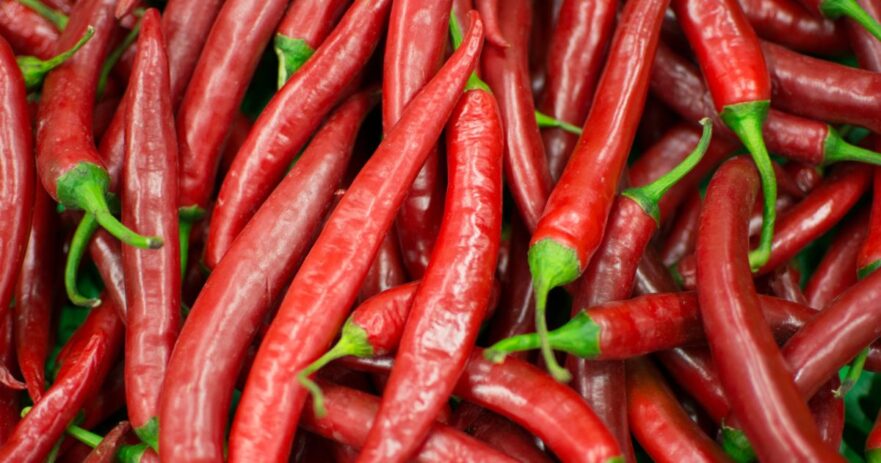In this article about tabasco pepper:
🗺️ Origin and history | 🌶️ Uses | ✨ Appearance and taste | 🌶️ Types | 🧑🌾 Growing – gardening | 👨🍳 Cooking – recipes | 🛒 Where to buy | 🫙 How to store | 👨⚕️ Health benefits | 🌶️ Alternatives and substitutes | ❓ Frequently asked questions
What is the tabasco pepper?
Tabasco peppers are a well-known type of chili pepper predominantly used to create the famous Tabasco sauce. These peppers are small, slender, and vibrantly red when ripe, and they pack a punch with moderate to high heat levels. Originating from Mexico, Tabasco peppers have become a staple in various cuisines around the globe.
The Tabasco pepper’s piquant and slightly fruity flavor has earned it a prominent place in diverse culinary applications. While it‘s most commonly associated with the iconic hot sauce, Tabasco peppers can also be used in other items like salsas, marinades, and stews. In addition, this versatile pepper adds a unique and fiery twist to various recipes, making it a favorite among spicy food enthusiasts.
| Tabasco pepper | |
| SHU | 30,000 - 50,000 |
| Median SHU | 40,000 |
| Flavor | Spicy, tangy, and slightly sweet and smoky, with fruity undertones |
| Species | Capsicum frutescens |
| Origin | Mexico, but commonly grown in Louisiana, USA |
| Uses | Tabasco sauce, pickling, marinades, etc. |
Are tabasco peppers spicy? How hot are they?
Tabasco pepper scoville: 30,000 to 50,000 SHU
Tabasco peppers are indeed spicy. With a Scoville rating of 30,000 to 50,000 units, they‘re significantly hotter than jalapeño peppers, which range from 2,500 to 8,000 Scoville units.
Tabasco peppers provide a more intense kick than milder chili varieties like banana peppers or pepperoncini. However, they‘re not as hot as other chilies like habanero or ghost peppers. Factors such as growing conditions and maturity can impact the heat level of Tabasco peppers, but they consistently offer a spicy and flavorful addition to dishes.
🗺️ ORIGIN AND HISTORY
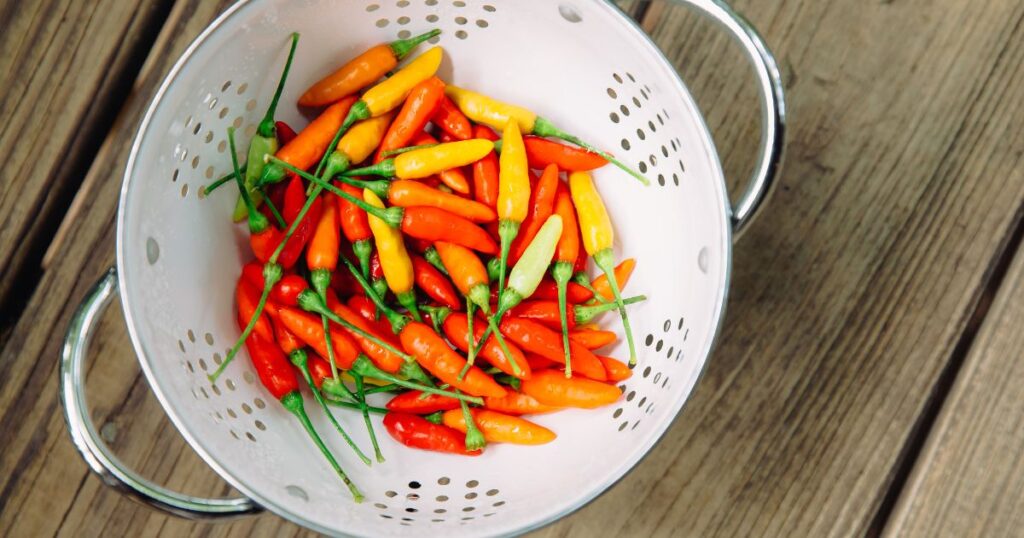
Where do tabasco peppers come from?
Tabasco peppers originated in Mexico, and their name is derived from the Mexican state of Tabasco. These peppers were consumed by indigenous populations in the region for centuries before European explorers even discovered them. Then, in the 19th century, Tabasco peppers were introduced to the United States, gaining popularity in Louisiana and spreading from there.
The association with the famous Tabasco hot sauce has significantly contributed to the worldwide popularity of these peppers. Today, these peppers are grown and enjoyed worldwide for their unique flavor and heat profile.
🌶️ USES
What are tabasco peppers good for? How to use them?
Tabasco peppers are versatile and flavorful ingredients that can be used in many dishes to add spice and depth of flavor. In addition, these fiery little peppers are known for their wild heat, making them pretty popular for people wanting to add a kick to their meals.
The most famous use of Tabasco peppers is definitely in making Tabasco sauce. This iconic hot sauce is made by fermenting and aging the peppers with vinegar and salt. The result is a tangy, spicy condiment that‘s become a staple in kitchens worldwide. Tabasco sauce can be the perfect addition for anything from tacos to mac & cheese.
Tabasco pepper in vinegar is another popular preparation. By pickling the peppers in vinegar, the heat is preserved while adding a tangy, acidic flavor that complements a variety of dishes. Tabasco pepper-infused vinegar can be used as a condiment, in marinades, or as an ingredient in salad dressings and sauces.
Tabasco peppers can even be used in their fresh form to add heat to various things. For example, you can chop these up and mix them with tomatoes, onions, garlic, and other seasonings to create a fiery, flavorful salsa. You can even blend up Tabasco peppers with avocado, lime juice, and salt to make delicious and spicy guacamole.
These little peppers can also be added to cooked dishes like stir-fries, soups, and stews. Their heat pairs well with any meat, and their flavor complements all kinds of cuisines, including Mexican, Cajun, and Caribbean.
✨ APPEARANCE AND TASTE
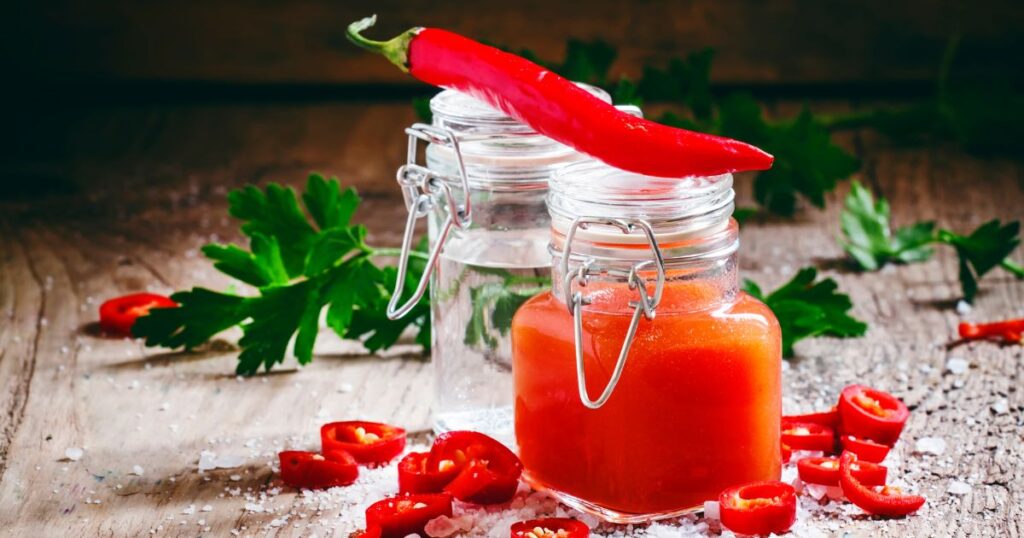
What do tabasco peppers look like?
Tabasco peppers are small, slender chili peppers that are usually 1.5 to 2 inches long. They grow upright on the plant, and as they mature, their color turns from pale green to fiery red when fully ripe. The skin of Tabasco peppers is relatively thin and smooth. Their size and vibrant color make them an attractive addition to various dishes.
How do tabasco peppers taste like?
Tabasco peppers are known for their bold flavor and significant heat. With a high Scoville heat rating, they‘re much spicier than many other chili peppers. Their taste is characterized by an initial sweet, fruity, slightly smoky flavor followed by an intense, lingering heat that builds on the palate.
Tabasco peppers can add a delightful kick to various dishes when used in moderation without overpowering the other flavors. Using caution when adding these peppers into recipes is important, as a little really can go a long way. The heat can be tempered by pairing them with milder ingredients or by using smaller amounts.
🌶️ TYPES
What are the different types of tabasco peppers?
While less diverse than some other chili pepper varieties, tabasco peppers come in a few colors, each with its own characteristics. We’ll explore two types: red and green.
The red tabasco pepper is the most recognizable and widely used. It‘s a bright red and fully ripe, giving an intense heat and a fruity, slightly smoky flavor. Red Tabasco peppers are the primary ingredient in the famous Tabasco sauce.
On the other hand, green tabasco peppers are the unripe version of this pepper. They have a vibrant green color and a slightly milder heat than their red counterparts. The flavor profile of green tabasco peppers is more herby, making them great for adding a touch of spice without overpowering the dish.
Both red and green tabasco peppers can be used in all sorts of recipes, and experimenting with these different types of Tabasco peppers can lead to exciting new flavor combinations.
🧑🌾 GROWING – GARDENING
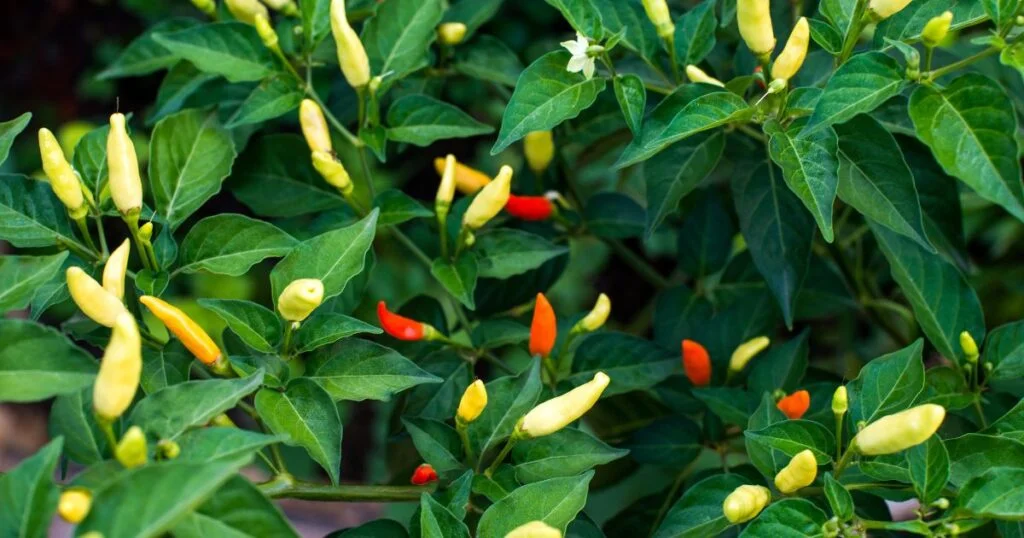
How to grow tabasco pepper?
Tabasco peppers are a favorite with home gardeners, as they‘re relatively easy to grow and can produce a generous yield. These plants do best in warm, sunny environments and can be grown in garden beds or containers. Tabasco peppers need well-draining soil, regular watering, and consistent fertilization during the growing season.
When to pick tabasco peppers?
Keeping an eye on the development of tabasco peppers is crucial to know the ideal time to harvest. Generally, tabasco peppers are ready to harvest about 80 to 100 days after planting. However, the harvest time depends on the desired heat level and flavor of the peppers, which are influenced by their color, transitioning from green to yellow and finally to red.
Harvesting the peppers when green will produce a milder, more herbaceous flavor while allowing them to ripen to red will yield a hotter, fruitier taste. Regular harvesting encourages the plants to grow more peppers throughout the growing season, making sure you have a continuous supply.
👨🍳 COOKING – RECIPES
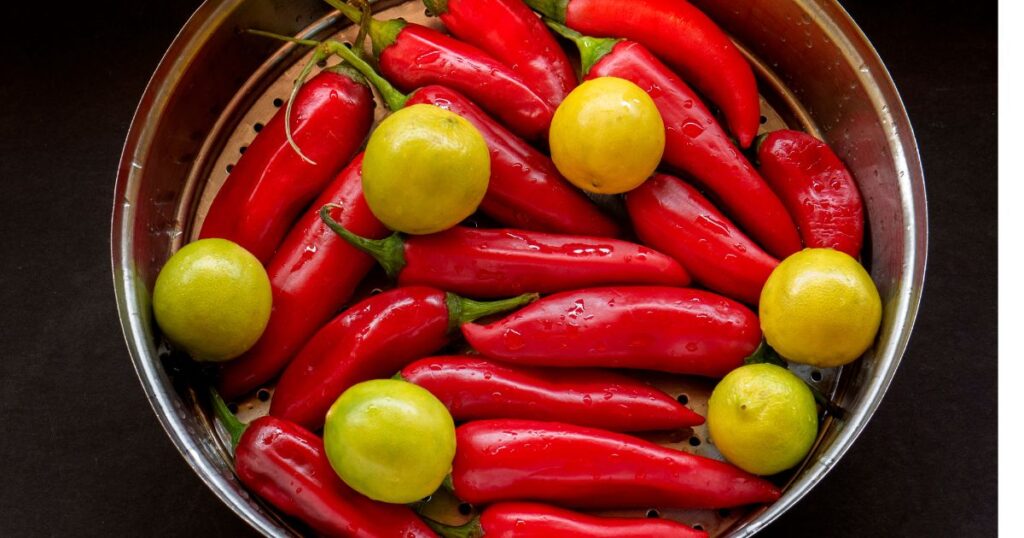
Cooking/Recipe ideas for tabasco peppers
Tabasco peppers are incredibly versatile in the kitchen, adding a distinct, spicy kick to whatever you put them in. They can be used in all kinds of ways to showcase their unique flavor, from hot sauces to pepper jellies. Here are some fun ideas to inspire your culinary creativity using Tabasco peppers.
Tabasco sauce for wings is pretty popular, providing a zesty, spicy coating that pairs perfectly with tender, juicy meat. To make your own Tabasco buffalo wing sauce, combine melted butter, Tabasco sauce, vinegar, brown sugar, and your choice of seasonings, then toss your wings in the mixture. Serve with blue cheese or ranch dressing for a cooling contrast to the heat.
Tabasco pepper jelly is a condiment that balances sweetness with a fiery kick. This versatile jelly can be spread on toast, served with crackers and cheese, or used as a glaze for grilled meats. To make Tabasco pepper jelly, simmer Tabasco peppers, sugar, vinegar, and pectin until the mixture reaches a gel-like consistency. Allow it to cool, then transfer it to jars and refrigerate.
Aside from these recipes, Tabasco peppers can be incorporated into tons of dishes to give them a spicy punch. Add a few Tabasco sauce dashes to your next chili batch, or use the peppers to create a fiery hot sauce for tacos and other Mexican dishes. Tabasco peppers have endless possibilities, so don’t be afraid to experiment and discover new ways to enjoy them!
🛒 WHERE TO BUY
Where can I buy tabasco peppers?
Tabasco peppers are available at various grocery stores in varieties, including fresh, dried, and bottled hot sauces. If you’re having difficulty finding them at your local supermarket, try checking specialty food stores, farmers’ markets, or online retailers specializing in fresh produce. When selecting fresh Tabasco peppers, look for ones that are brightly colored, firm, and free from any dark spots, which may indicate overripeness.
Where can I buy tabasco pepper plants?
For those who prefer to grow Tabasco pepper plants in their garden, many garden centers and nurseries carry these young plants during the growing season. Purchasing plants like this allows you to skip the initial germination and seedling stage, providing a head start on your tabasco peppers’ growth. If you can‘t find tabasco pepper plants locally, some online retailers specialize in shipping live plants, meaning that you can have them delivered right to your doorstep.
Where can I buy tabasco pepper seeds?
Gardeners who want to cultivate their tabasco pepper plants from start to finish can purchase seeds, usually available at local garden centers, nurseries, or through online seed retailers. When buying seeds online, choose a reputable seller to guarantee the quality of the seeds.
🫙 HOW TO STORE
How do I store tabasco peppers?
Fresh tabasco peppers can be stored in the refrigerator for up to two weeks. To store them, pop the peppers in a plastic bag or an airtight container and keep them in the crisper drawer of your refrigerator. This helps maintain their texture and flavor, allowing you to enjoy them for longer. Like any other fresh produce, tabasco peppers can spoil over time. Indicators that they‘re no longer suitable for consumption include dark spots, a foul odor, or a mushy texture. If you notice any of these signs, tossing the peppers is best.
Dried or pickled Tabasco peppers have a longer shelf life than fresh ones and can be stored in a cool, dark place like a pantry for several months. Keep the peppers in their original packaging or transfer them into an airtight container to preserve flavor and texture.
Can Tabasco peppers be frozen?
Freezing is another option for storing Tabasco peppers. To freeze, wash the peppers thoroughly and remove the stems and seeds. Place the peppers in a single layer on a baking sheet and put the sheet in your freezer for several hours. Once frozen, transfer them to an airtight container or plastic freezer bag and store them in the freezer for up to six months. Remove them from the freezer and thaw them whenever you’re ready to use them.
❤️🩹 HEALTH BENEFITS
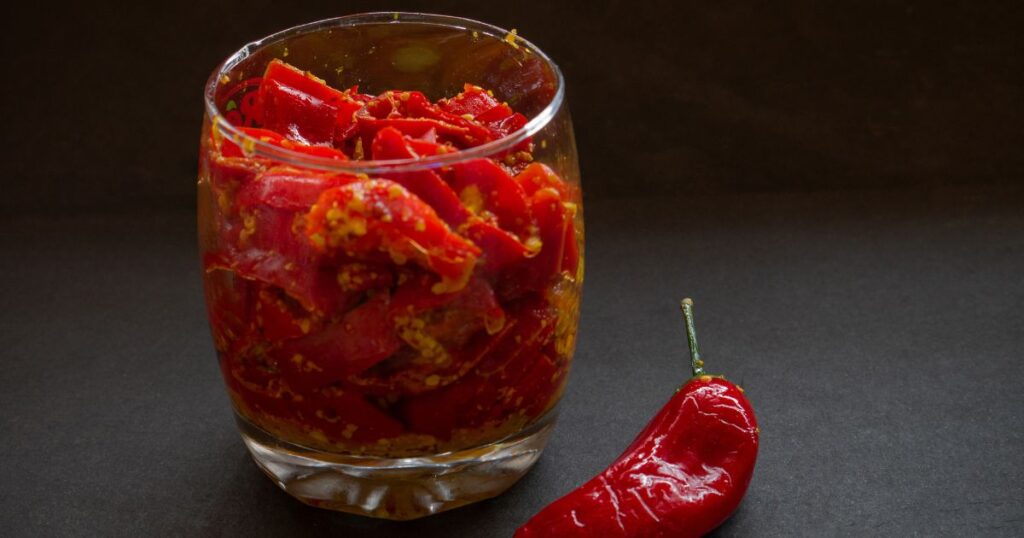
Are tabasco peppers healthy?
Tabasco peppers are a spicy addition to your meals and a decent source of essential nutrients. These peppers are low-calorie and high-fiber, making them a nice choice for a healthy diet. They‘re particularly rich in vitamin C, which can help improve the immune system. Tabasco peppers also contain vitamin A and carotenoids, which protect our bodies against the harmful effects of free radicals.
In addition to these vitamins, tabasco peppers contain capsaicin, a compound known for its anti-inflammatory, pain-relieving, and even metabolism-boosting properties.
It’s important to keep in mind that some people may experience stomach discomfort after consuming spicy foods. Therefore, if you feel any discomfort after eating tabasco peppers, it’s best to reduce the amount you consume or avoid them altogether.
🔄 ALTERNATIVES AND SUBSTITUTES
What is a good Tabasco pepper alternative?
Several options are available when looking for an alternative for Tabasco peppers, each offering different flavors and heat levels to suit your taste preferences or recipe requirements.
Cayenne peppers are ideal if you want a similar heat level to Tabasco peppers. They pack a punch, making them a suitable substitute in hot sauces, stews, or any recipe requiring a spicy kick.
You could also consider serrano peppers as an alternative. While they carry less heat than Tabascos, you can bump their mild spiciness using the seeds and membranes. Their flavor profile complements a variety of dishes but with a little less heat.
For those who prefer an even milder alternative, jalapeño peppers might be the right option. While these peppers aren‘t as hot as Tabasco peppers, they still add a touch of spice to recipes. Use them in anything where a moderate heat level is desired.
If you want to maintain the vinegar-based flavor of Tabasco sauce but with less heat, consider using Louisiana-style hot sauce or Frank’s RedHot as a substitute. These sauces offer a tangy and slightly spicy taste that can be used in various recipes, such as buffalo wings, marinades, or dressings.
How do you pronounce Tabasco pepper?
The correct pronunciation of Tabasco peppers is tuh-bas-koh pep-pers.
🙋 FREQUENTLY ASKED QUESTIONS
FAQ about Tabasco peppers
Are Tabasco peppers hot?
Yes, Tabasco peppers are pretty hot, ranging between 30,000 to 50,000 on the Scoville heat scale. Their heat level and unique, tangy flavor make them popular for hot sauces and spicy dishes.
Are Tabasco pepper plants perennials?
Tabasco pepper plants are technically perennials, which means they can live and produce fruit for multiple years. However, they‘re often grown as annuals in regions that experience frost or cold winters, as these plants aren‘t frost-tolerant.
Are Tabasco peppers hotter than jalapeños?
Tabasco peppers are significantly hotter than jalapeños. While jalapeños typically range from 2,500 to 8,000 on the Scoville heat scale, Tabasco peppers are about 10 times spicier, providing a more intense heat in recipes.
Is Tabasco sauce healthy?
Sure, Tabasco sauce can be good when used in reasonable amounts. It's a zero-calorie, fat-free condiment, making it a guilt-free flavor enhancer. In addition, its key component, capsaicin, is known to offer anti-inflammatory benefits and could aid in metabolism boosting. However, be aware that Tabasco does have a moderate sodium content, so those monitoring their salt intake should use it wisely.
Will Tabasco peppers ripen off the vine?
They sure can! Placing them in a paper bag or near ethylene-producing fruits like tomatoes or apples can help speed up the process.
How many peppers are in a bottle of Tabasco sauce?
A 2-ounce bottle of Tabasco sauce contains approximately 720 drops, made from numerous Tabasco peppers, as each pepper contributes to several drops of the sauce.
What’s the difference between Tabasco pepper and cayenne?
Tabasco and cayenne peppers have distinct flavors and physical characteristics. Tabasco peppers are recognized for their juiciness. Cayenne peppers are drier, delivering a more focused heat and subtle earthiness. Tabasco peppers are typically smaller in size, while cayenne peppers are longer.
